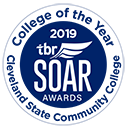Statistician
Statisticians
15-2041.00
Median wages
$58,430
Develop or apply mathematical or statistical theory and methods to collect, organize, interpret, and summarize numerical data to provide usable information. May specialize in fields such as bio-statistics, agricultural statistics, business statistics, or economic statistics. Includes mathematical and survey statisticians.
- Identify relationships and trends in data, as well as any factors that could affect the results of research.

- Report results of statistical analyses, including information in the form of graphs, charts, and tables.

- Analyze and interpret statistical data to identify significant differences in relationships among sources of information.

- Adapt statistical methods to solve specific problems in many fields, such as economics, biology, and engineering.

- Develop software applications or programming to use for statistical modeling and graphic analysis.

- Develop and test experimental designs, sampling techniques, and analytical methods.

- Prepare data for processing by organizing information, checking for any inaccuracies, and adjusting and weighting the raw data.

- Plan data collection methods for specific projects and determine the types and sizes of sample groups to be used.

- Process large amounts of data for statistical modeling and graphic analysis, using computers.

- Evaluate the statistical methods and procedures used to obtain data to ensure validity, applicability, efficiency, and accuracy.

- Design research projects that apply valid scientific techniques and use information obtained from baselines or historical data to structure uncompromised and efficient analyses.

- Present statistical and nonstatistical results using charts, bullets, and graphs in meetings or conferences to audiences such as clients, peers, and students.

- Develop an understanding of fields to which statistical methods are to be applied to determine whether methods and results are appropriate.

- Supervise and provide instructions for workers collecting and tabulating data.

- Evaluate sources of information to determine any limitations in terms of reliability or usability.

- Apply sampling techniques or use complete enumeration bases to determine and define groups to be surveyed.

- Examine theories, such as those of probability and inference, to discover mathematical bases for new or improved methods of obtaining and evaluating numerical data.

- Report results of statistical analyses in peer-reviewed papers and technical manuals.
- Analytical or scientific software — Aptech Systems GAUSS; SAS ; The MathWorks MATLAB ; XLISP-STAT (see all 35 examples)

- Business intelligence and data analysis software — Tableau

- Data base management system software — Apache Hadoop ; Apache Pig ; Teradata Database
- Data base user interface and query software — IBM DB2; Microsoft Access ; Structured query language SQL
- Data mining software — Angoss KnowledgeSEEKER; NCR Teradata Warehouse Miner; SAS Enterprise Miner

- Development environment software — Common business oriented language COBOL ; Formula translation/translator FORTRAN; Microsoft Visual Basic
- Enterprise application integration software — SAS/CONNECT

- Enterprise resource planning ERP software — SAP
- Object or component oriented development software — C++ ; Python ; R ; Sybase PowerBuilder (see all 5 examples)

- Object oriented data base management software — Microsoft Visual FoxPro

- Office suite software — Microsoft Office

- Operating system software — Linux ; UNIX
- Presentation software — Microsoft PowerPoint
- Spreadsheet software — Microsoft Excel
- Word processing software — Microsoft Word
- Mathematics — Using mathematics to solve problems.

- Critical Thinking — Using logic and reasoning to identify the strengths and weaknesses of alternative solutions, conclusions or approaches to problems.

- Reading Comprehension — Understanding written sentences and paragraphs in work related documents.

- Active Listening — Giving full attention to what other people are saying, taking time to understand the points being made, asking questions as appropriate, and not interrupting at inappropriate times.

- Active Learning — Understanding the implications of new information for both current and future problem-solving and decision-making.

- Complex Problem Solving — Identifying complex problems and reviewing related information to develop and evaluate options and implement solutions.

- Judgment and Decision Making — Considering the relative costs and benefits of potential actions to choose the most appropriate one.

- Science — Using scientific rules and methods to solve problems.

- Speaking — Talking to others to convey information effectively.

- Programming — Writing computer programs for various purposes.

- Writing — Communicating effectively in writing as appropriate for the needs of the audience.

- Systems Analysis — Determining how a system should work and how changes in conditions, operations, and the environment will affect outcomes.

- Learning Strategies — Selecting and using training/instructional methods and procedures appropriate for the situation when learning or teaching new things.

- Monitoring — Monitoring/Assessing performance of yourself, other individuals, or organizations to make improvements or take corrective action.

- Systems Evaluation — Identifying measures or indicators of system performance and the actions needed to improve or correct performance, relative to the goals of the system.










